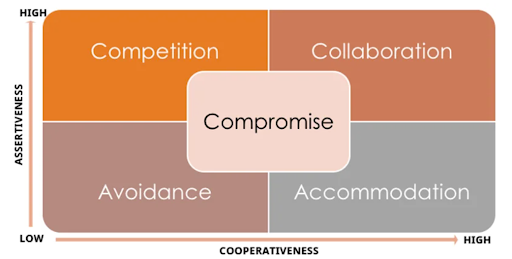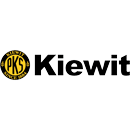- A Step-by-Step Action Plan to Improve Leadership Skills
- A Step-by-Step Business Strategy Implementation Plan
- Create Alignment with a Team Agreement Template
- How Can Leaders Motivate Their Teams
- How to Build a Positive Team Culture Using Team Activities
- How to Build an Individual Leadership Development Plan [Template]
- How to Build and Work with Cross-Functional Teams
- How to Deal with an Employee Who Doesn’t Communicate Well
- How to Evaluate Teamwork Performance
- How to Handle Interpersonal Conflict at Work
- How to Help Team Members Grow
- How to Improve Teamwork Among Employees
- How to Tell a Team Member They Are Underperforming
- How to Write a Strategy Statement
- Questions to Ask During a Leadership Transition
- Team Feedback Template: Drive the Right Conversions
- Team Leader Performance Review Templates
- Team Mission Statement Template
- Team-Building Survival Scenario: Elevate Team-Building Skills

The workplace is filled with challenges that create conflict and tension. Disagreements exist not just between two individuals but also within and across teams, as well as with vendors, suppliers, and even customers. Because it is so common, interpersonal conflict is a challenging obstacle to overcome, not to mention a costly one.
Yet, when equipped with the tools to solve conflict constructively and proactively, you can strengthen relationships and give your colleagues and team members the confidence to be collaborative and create better outcomes.
This guide on how to handle interpersonal conflict at work offers professionals actionable skills and tools to recognize and resolve conflict in the workplace.
Recognizing Early Signs of Interpersonal Conflict
These are six common signs of interpersonal conflict. Each one comes with causes and actionable steps to help you proactively react to and resolve the issue. Use this information to help guide you in addressing interpersonal conflict no matter the situation.
1. Increased Tension
You can observe increased tension by paying attention to shifts in the team’s mood and non-verbal gestures during meetings or interactions. There may also be more disagreements or complaints from individuals than usual.
- Causes: Absence of psychological safety or lack of empathy between those involved could be a factor.
- Action: If tension is palpable, consider addressing the issue privately with the involved parties. Listen actively to both parties to understand the issue from their point of view. Create a safe space for individuals to express their concerns and perspectives without fear of judgment.
2. Decreased Communication
When conflict or differences arise, individuals may r withdraw from one another. They may also use vague language that causes confusion and misunderstanding.
- Causes: Low morale, limited feedback, or unclear expectations may be a common recurrence that gradually decreases communication.
- Action: Set clear goals for team members, provide regular feedback, and help build positive relationships within the team. Actively encourage communication and assist individuals in identifying, understanding, and potentially adjusting their respective communication styles so that every team member feels listened to.
3. Reduced Collaboration
A lack of feedback or contribution during meetings, groupthink, and creation of siloes are some signs of reduced collaboration.
- Causes: A lack of trust, poor communication, and insufficient resources can all make it difficult to collaborate.
- Action: Understand each person’s working and communication style and establish appropriate times to meet and work together. Determine project workloads and allocate tasks, to ensure that all team members have the opportunity and space to engage and collaborate with others. Provide adequate tools and resources for team collaboration. Huddles and team-development activities can also help foster trust and collaboration.
4. Competition for Resources
Team members or colleagues may find access to company resources difficult, challenging, or competitive. These resources can include anything from a digital folder that houses client onboarding documents to much needed face time with key stakeholders. Productivity and performance may decline because of competitiveness.
- Causes: The company lacks adequate internal organization that could enable equal access to organizational resources.
- Action: Provide a platform for individuals to share their thoughts on the resources they need. Establish a streamlined platform or process that allows for fair and reasonable allocation of resources.
5. Personality Differences/Clashes
The group may have regular disagreements, and team members may refuse or be unwilling to see each other’s perspectives. This may be accompanied with disruptive behaviors such as avoidance or stonewalling.
- Causes: Incompatible personality types, working experiences, backgrounds, values, or goals.
- Action: Help each person voice their thoughts and concerns to the group and feel heard. Utilize personality assessments such as DISC to encourage more mutual understanding, cooperation, and productive dialogue.
6. Unclear or Conflicting Roles and Responsibilities
Individuals may cross boundaries (e.g., doing work that may overlap with another individual’s area of responsibility), which can result in duplicate work, disagreements, and contention.
- Causes: A group member may just be starting a new role and lack the clarity to feel confident in their position. The absence of a well-planned change management strategy for major changes can also contribute to elevated tension in a group.
- Action: Conduct a team meeting to outline or review the roles and responsibilities of each person and document the discussion points in writing.
Applying Conflict Resolution Models and Strategies
There are several conflict resolution approaches you can take to help streamline your efforts. The following framework, adapted from the Thomas-Kilmann Conflict Mode Instrument, serves as a good starting point. We encourage you to use this framework to begin building a customized conflict resolution approach.
The Thomas-Kilmann model is based on five methods for solving conflict:
- Competing: Pursuing one’s interests at the expense of others
- Collaborating: Working together to find a solution that satisfies all parties
- Compromising: Finding a middle ground that partially satisfies all individuals
- Avoiding: Disengaging from the conflict, pursuing neither one’s own interests nor others’
- Accommodating: Sacrificing one’s own interests for the sake of the other side
The method you choose is based on two variables: assertiveness and cooperativeness.
- Assertiveness: The degree to which people are willing to be decisive, take the initiative, and assert confidence without being overly aggressive
- Cooperation: The degree to which people are willing to work together to find common ground.
You’ll notice in the illustration below that the more assertive people are, the more competitive they come across to others. The more cooperative people are, the more accommodating they are willing to be. Demonstrating high levels of both assertiveness and cooperativeness will make people more collaborative. Conversely being low on both traits makes them more avoidant. Finally, balance on both dimensions leads to a simple compromise.

Identifying people’s preferred conflict resolution methods can help team members understand each other and their own areas for improvement. While each method has its place, it’s important to be able to choose and apply methods that you may be less comfortable with when the situation calls for it. In a team environment, fostering collaboration and compromise—or a balance of assertiveness and cooperation—can be especially valuable to the long-term success of the team.
By taking these steps, you will cultivate cooperation among team members. Common ground does not necessarily mean all parties fully agree, but it’s about identifying an element that unites everyone and helps them work together toward a desired goal.
Ensuring Post-Resolution Follow-Up
It’s important to keep in mind that conflict is not a negative force. Conflict can fuel healthier relationship dynamics and push individuals to be their best selves when addressed with thought and good intentions. Constructive dialogue helps promote innovation, creativity, and new ideas.
Maintaining accountability for post-resolution follow-up is key to nurturing healthy outcomes. Here are some examples of post-resolution follow-up:
- Confirm the individual’s or group’s understanding of the resolution and ensure there are no lingering misunderstandings or concerns.
- Provide a platform for people to share their thoughts on the resolution process, such as one-on-one discussions with team members.
- Observe changes in behavior following the resolution. Look for signs of improved collaboration, communication, and teamwork. Address any regressive behavior promptly.
- Reflect on the effectiveness of the resolution process. If certain aspects could be improved, adjust the conflict resolution strategy accordingly. Continual improvement is key to refining conflict resolution practices over time.
Provide Conflict Resolution Training
For further guidance on how to handle interpersonal conflict at work, take advantage of CMOE’s Conflict and Collaboration workshop. We help leaders and team members develop practical skills to build productive relationships and create healthy working environments.
Contact us for more information.
















